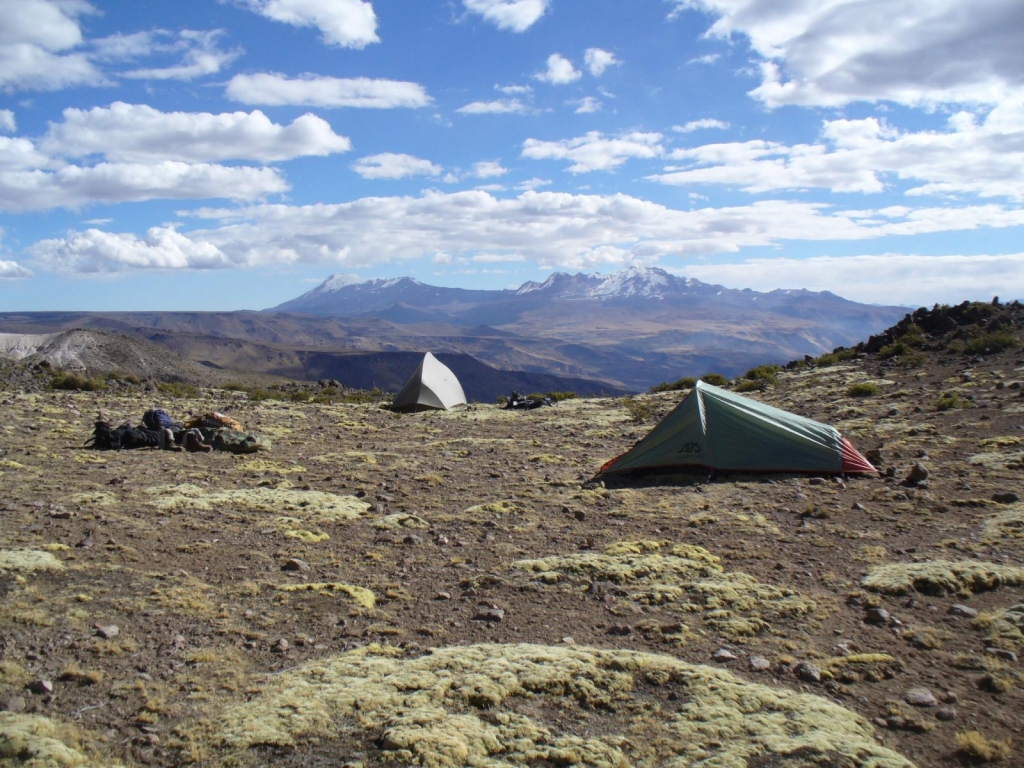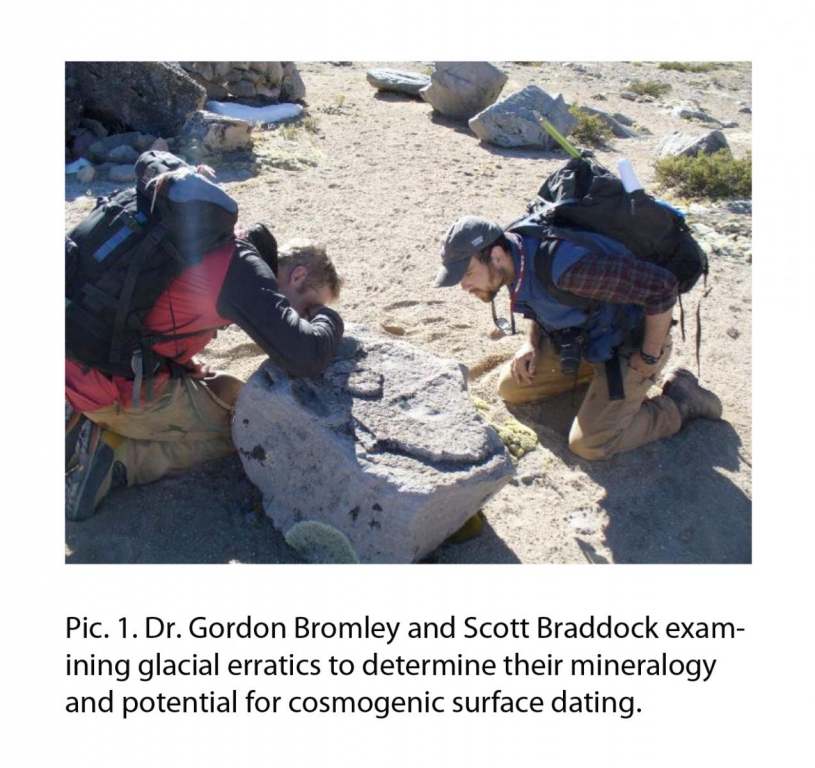
Terminal Pleistocene glaciation of high-altitude Andes near Chivay, Peru: Implications for tropical Paleoclimate and Paleoindian-age People
Terminal Pleistocene glaciation of high-altitude Andes near Chivay, Peru: Implications for tropical Paleoclimate and Paleoindian-age People
Field Team Members: Scott Braddock, Paul Pluta, Gordon Bromley
Field Season: Chivay, Peru
July 1, 2013 – July 21, 2013
Scientific Goals and Rationale
Our research aimed to use glacial geology to address how glaciers behaved during the Terminal Pleistocene in the tropical Andes and how the impacts of ice-marginal fluctuations may have influenced human-environment interactions in southern Peru. To address these questions we proposed to determine: (1) whether glacial features in the Chivay region date to the Younger Dryas (12,800 – 11,500 years before present), or show a different signal better correlated to the Antarctic Cold Reversal (14,500 – 12,500 years before present), and (2) if the Chivay obsidian source was covered by a glacial readvance at the end of the Pleistocene, making the site inaccessible to early South Americans, such as the occupants of Quebrada Jaguay.
Research Activities
To understand the local glacial history near Chivay, Peru, and to determine when obsidian-source sites became ice free, we wanted to begin developing a high-resolution record of glacier fluctuations during the Late Pleistocene by mapping glacial features (moraines, drift, erratics, and other depositional and erosional landforms) in the field onto satellite images. Relative ages of moraines and drift were then determined by observing differences in weathering, composition, and cross-cutting relationships. In addition, we mapped existing obsidian nodules in the field to correlate with glacial deposits.
We collected rock samples from moraines and drift that were located near the main obsidian source to use for 3He and 10Be dating (Pic. 1). By dating rocks from these landforms we can assign a relative age for when obsidian was no longer covered by ice and, therefore, available for use by local populations. Also, as an alternative to cosmogenic dating, samples of obsidian were collected for potential use in obsidian hydration dating. In addition, the area was surveyed for evidence of early human occupation related to use of the local obsidian. In particular, previously unexplored cliff faces were searched extensively for rockshelters that may have been used for temporary shelter (Pic. 2).
Findings
On the first day we were successful in locating the Chivay obsidian source. Close to the source, we found five glacial erratics that appeared to be suitable for cosmogenic dating. The samples were shipped back to the University of Maine and are being prepared for dating. We have not yet determined the method of dating (e.g. 10Be, 3He, 36Cl ) that will be appropriate for our samples because their mineral composition could not be identified in the field. Our next step will be to crush the samples and separate out heavy minerals. This process will allow us to identify an appropriate dating method based on the rocks mineral composition.
Additionally, nine previously unrecorded rockshelters were discovered during archaeological survey. Two of these sites contained obsidian fragments. While bearing no clear evidence of human alteration, it is likely that their presence is an indication of human activity because the rockshelters are outside the area of naturally occurring obsidian. Several previously documented open air sites were re-explored. At one such site, two obsidian bifaces (Pic. 3) were discovered in a concentration of chipping debris. No diagnostic artifacts were found anywhere on or near the obsidian source. We believe that most of the diagnostic artifacts on the surface were likely collected by previous archaeological studies in the region.
Significance
Our field team was successful in collecting rock samples that will provide a relative age for the deglaciation of the Chivay region. These dates are vital to answer a key question proposed by Sandweiss et al. (1998) as to whether the glacial history of this region influenced the timing that the Chivay obsidian source became available to early populations. If it is found that ice occupied the obsidian-source site during the late Pleistocene/early Holocene then it affords strong evidence that the glacial history of the region played a major role in the timing of resource availability. Alternatively, if the ice had receded from this area before that time period, it may suggest that older archaeological sites containing Chivay obsidian have not been discovered, or that the source was unused for other reasons. This may encourage future field investigations in the region to search for these older paleoindian sites.
Future Work
Our group will continue to process the five samples collected in the field to find the mineral composition of each rock. Once we find an appropriate method for dating the next step will be to apply for a grant to fund sample analysis. Dr. Gordon Bromley has several ideas for funding and we are confident that samples can be sent out for dating in the spring, 2014.





